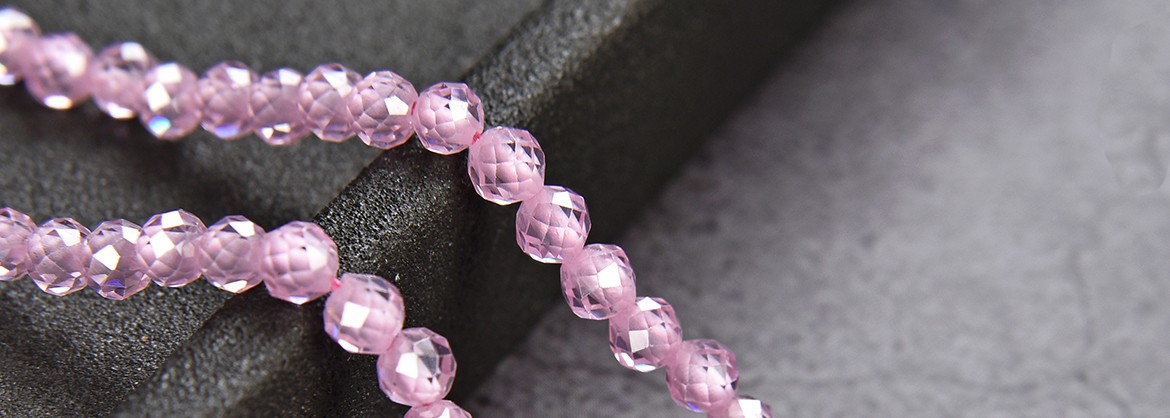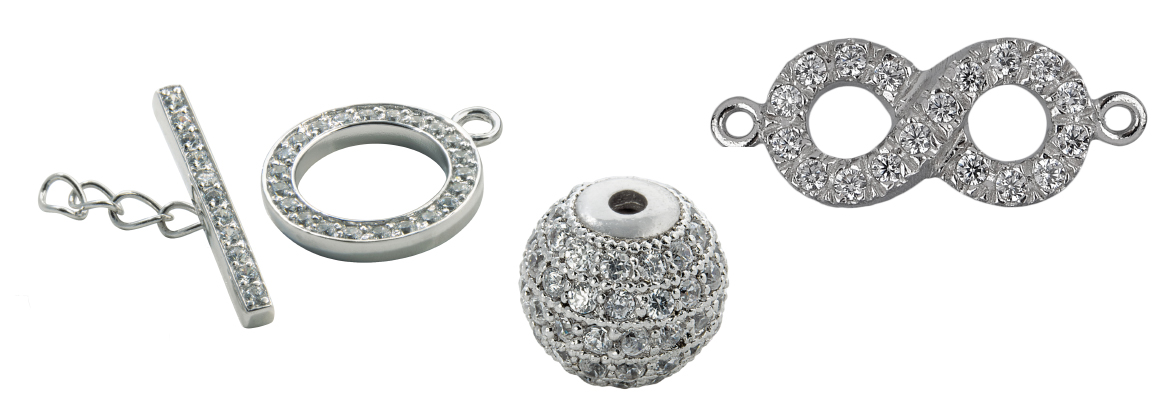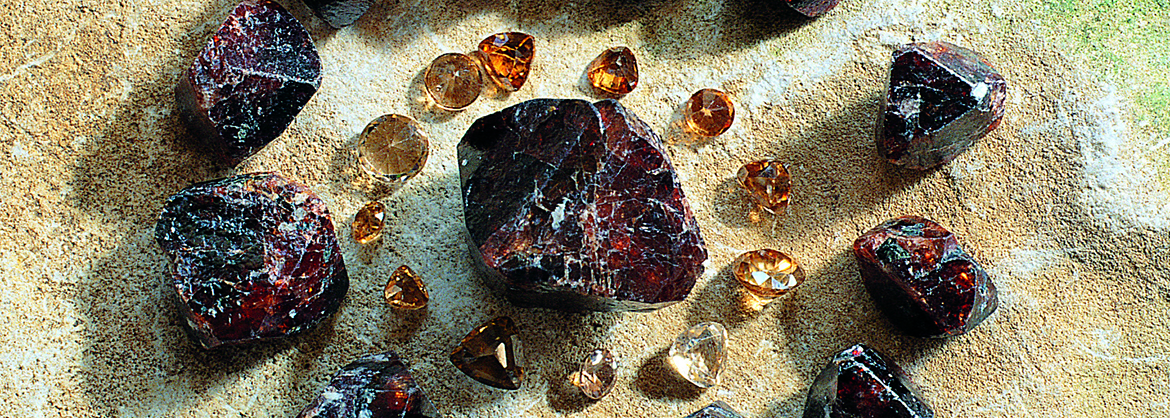
Cubic Zirconia
Cubic Zirconia is a synthetic gemstone that is a cost-effective alternative for natural diamonds. It is characterized by a wide color spectrum and intense vivid light reflections. If Cubic Zirconia was formerly primarily traded as a diamond imitation, it has now achieved its position as an independent jewelry stone.
Cubic Zirconia Characteristics
Scientific name: zirconia.
Crystal structure: Cubic
Colors: Can be made in almost any color; each by adding other elements. For example, iron colors yellow, vanadium or chromium green and titanium gold-brown.
Chemical formula: ZrO2.
Moh hardness: 8.5
Synonyms, other spellings: Fianite, Zirconia.
Here you can find our wholesale assortment of strands of sparkling cubic zirconia

Historical facts about Cubic Zirconia
Cubic zirconia was first discovered in 1937 by the German mineralogists von Stackelberg and Chudoba as small inclusions in natural zircon, to which they initially paid no particular attention. It was not until the 1970s years Cubic Zirconia crystals were produced by Soviet scientists in the laboratory and brought 1977 under the name "Djevalite" on the market. In the 1980s, Cubic Zirconia experienced its breakthrough on the world market.
Properties of Cubic Zirconia
Cubic Zirconia is considered the best imitation diamond in the world, which is almost indistinguishable from real diamonds to the naked eye, even by gemologists. Although the brilliance of cubic zirconia is not quite as high as diamond, for this the stone has more "fire", ie the color spectrum of light reflections is greater than that of diamond.
The specific gravity of cubic zirconia is about 75% higher than that of diamonds. Due to its remarkable hardness, which is only slightly below that of corundum (ruby, sapphire and spinel are second only to Diamond), the stone is impervious to impacts and scratches and is very easy to care for. Because the gemstone is manufactured in a laboratory, it is flawless and free of inclusions. With turbidities it concerns in most cases only superficial impurities, which can be easily removed.

Cubic zirconia is alsoused in silver intermediates and clasps. The small faceted stones can be inserted into the mold before casting the silver part. When the liquid silver slowly cools down and becomes solid again solidifies, the cubic zirconia stones are fixed in the desired position. This eliminates the need for time-consuming manual setting or gluing of the stones. We also carry in our wholesale assortment for jewelry designers intermediate parts and Clasps with Cubic Zirconia; this is clearly noted with the respective article.
Our selection of sparkling intermediate parts and closures with Cubic Zirconia.
Mineral Zircon
Not to be confused with Cubic Zirconia is the mineral zircon!
Chemical formula, mineral class: Zr[SiO4], insular silicate
Origin: magmatic, as mixtures in igneous rocks and pegmatites, in crystalline shales and sandstones
Color: mostly brown to brown-red, rarely also yellow, green, blue, colorless
Gloss: diamond-like luster
Crystal system: tetragonal
Moh hardness: 7.5
Splitability, fracture: imperfect splitability, conchoidal fracture.
Occurrences, main supplying countries: Ceylon, Australia (on soap deposits), Brazil, Madagascar, Norway
Appearance: mostly crystals grown in rock, double pyramids or prismatic appearance, transparent in gem quality
Use in stone healing: zircon reminds of the meaning of existence and helps to release attachment to material values. Detaches the attention of Scorpio-born from material interests and leads towards spiritual gains.
Availability: low.

